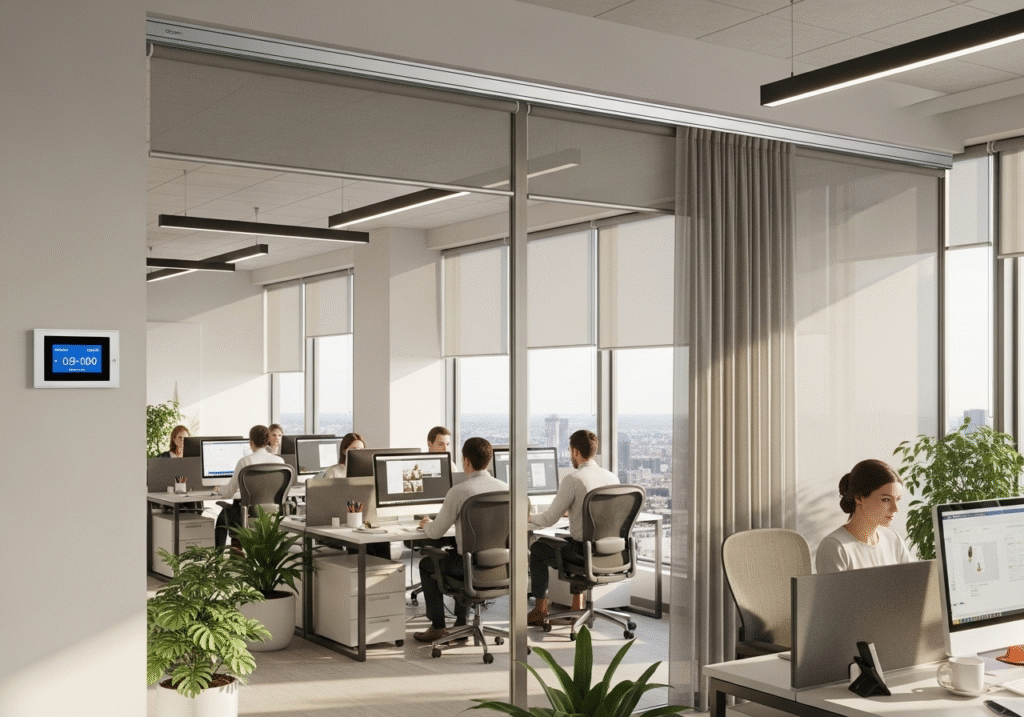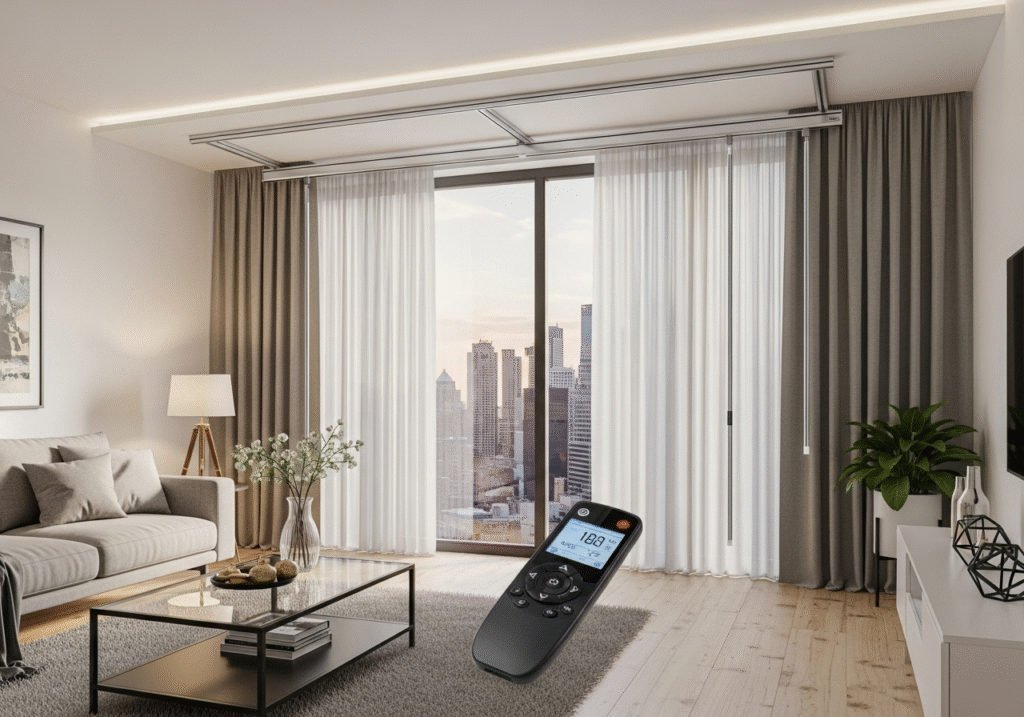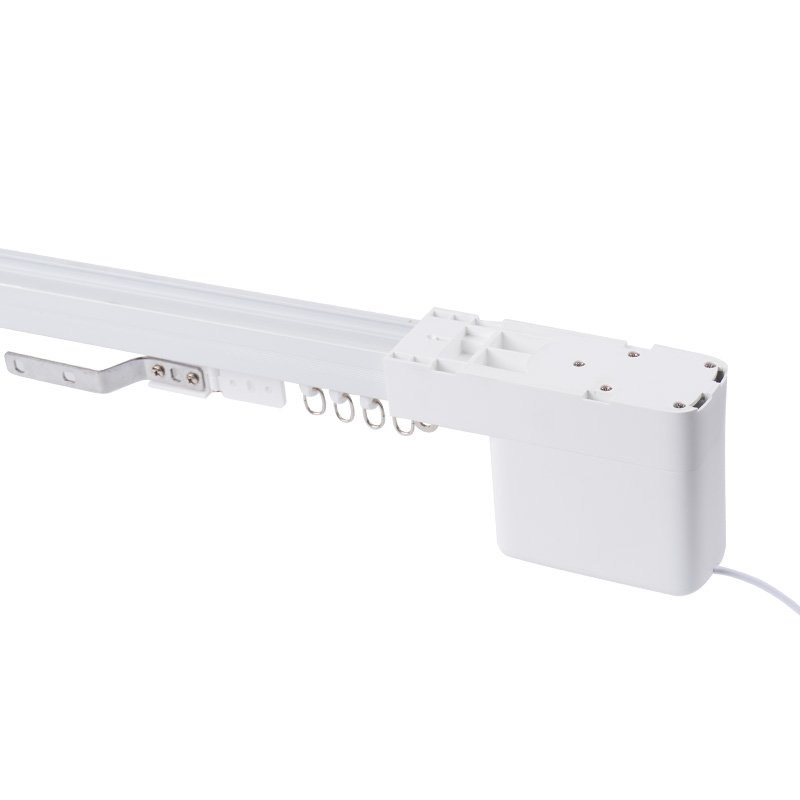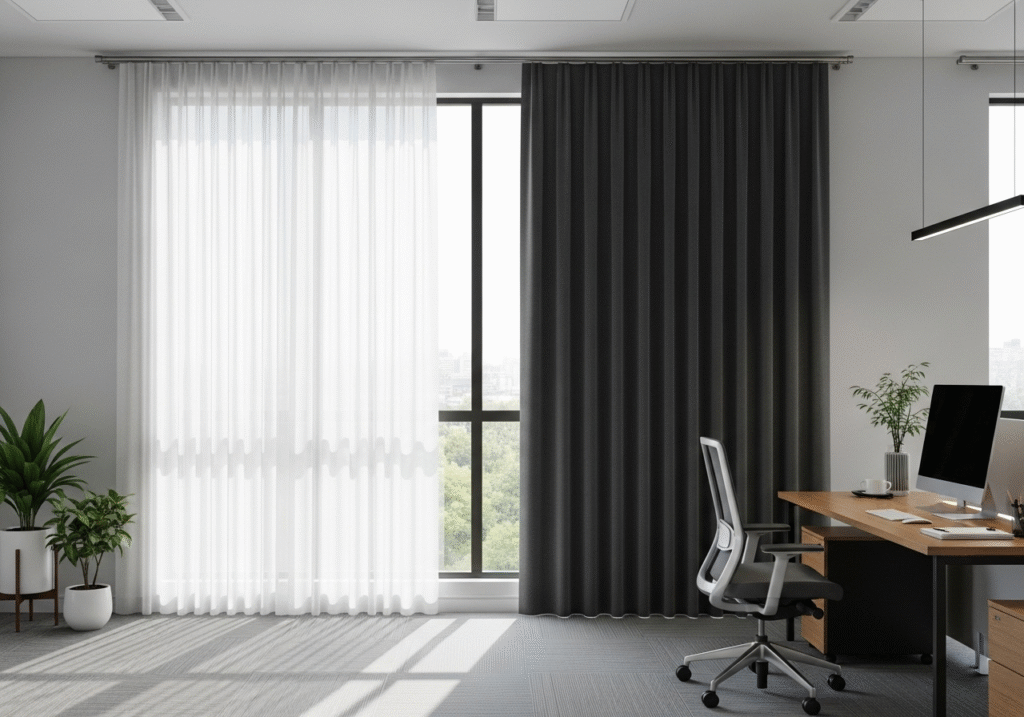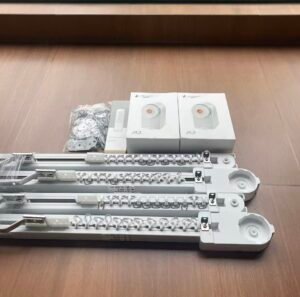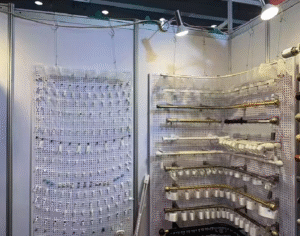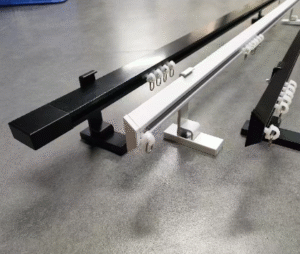Manually adjusting office curtains is a constant disruption. It creates glare on screens or plunges rooms into darkness, hurting focus and forcing staff to stop working. Automation offers a seamless solution.
Automated curtain tracks improve office efficiency by optimizing natural light, reducing energy consumption for heating and cooling, and minimizing manual disruptions. This creates a more comfortable and productive environment for employees.
I’ve seen the evolution of curtain hardware from basic manual systems to the smart, integrated technology we produce today. In the past, office solutions were purely functional. Now, a purchasing manager like Matt isn't just buying a track; he's sourcing a building management tool. He looks for systems that do more than just cover a window. He needs solutions that contribute to the company's bottom line by making the workspace smarter and more efficient. Automated tracks are no longer a luxury; they are a key part of a modern, productive office design.
How Do Automated Smart Curtain Tracks Improve Efficiency in Offices, and Are They Worth the Investment?
The upfront cost of smart automation can seem high. This makes facility managers wonder if the benefits are real or just a gimmick that won't deliver a return.
Yes, they are worth the investment. Automated tracks provide significant ROI through energy savings, improved employee productivity, and enhanced brand image. The long-term benefits easily outweigh the initial setup cost.
When discussing costs with partners, I always frame the conversation around value, not just price. An automated system is an asset that pays for itself. The value comes from three main areas: tangible cost savings, productivity boosts, and brand perception.
A Clear Return on Investment
The most direct saving is on energy. By programming curtains to close on sun-facing windows during the hottest part of the day, you significantly reduce the load on your air conditioning system. In cooler months, they can do the opposite, opening to allow solar heat to warm the space, reducing heating costs. These savings on HVAC bills are measurable and add up quickly. Furthermore, smart systems reduce the wear and tear associated with manual operation, extending the life of both the curtains and the hardware.
Boosting Productivity and Wellness
The biggest, yet less direct, return comes from your people. Studies consistently show that access to natural light improves mood, focus, and overall well-being. Automated systems maintain optimal light levels all day, reducing eye strain from screen glare and eliminating the need for employees to constantly get up and adjust blinds. This creates a more comfortable, focused, and productive work atmosphere.
| Feature | Financial Benefit | Employee Benefit |
|---|---|---|
| Scheduled Operation | Lower HVAC energy bills | Consistent, comfortable environment |
| Sun Sensors | Reduced peak cooling/heating load | Automated glare control, reduced eye strain |
| Central Control | Less manual wear and tear | No time wasted on manual adjustments |
How Do Motorized Automated Curtain Tracks Work to Improve Efficiency in Offices?
Understanding how motorized systems function seems complicated. Facility managers worry about complex installation, integration issues with existing building systems, and ongoing maintenance needs.
They work using a quiet electric motor housed in the track. This motor drives a belt that moves the carriers, opening or closing the curtains based on commands from remotes, wall switches, timers, or smart building systems.
From a manufacturing perspective, the beauty of a modern motorized track is its simplicity and reliability. The core technology has been refined to be robust and easy to use. The system consists of three main parts.
The Motor and Drive System
At the heart of the track is a compact, high-torque motor1. It's engineered to be extremely quiet so that its operation is never a distraction in an office environment. This motor turns a toothed pulley2, which moves a reinforced belt running in a loop inside the track channel. The main curtain carrier, known as the master carrier, is attached to this belt. As the belt moves, it pulls the master carrier and all the subsequent gliders along the track, smoothly opening or closing the drapes.
Control and Integration
The "smart" part of the system comes from its controls. A simple system might use a radio frequency (RF) remote or a wall-mounted switch. More advanced office solutions are integrated directly into the Building Management System (BMS). This allows for centralized control of all the window treatments in the building. It also enables automation based on schedules (e.g., close all west-facing curtains at 3 PM) or environmental sensors that react to the sun's intensity and position.
How Do Automated Window Curtain Tracks Work to Let Light In but Provide Privacy at Night?
Balancing the need for natural light during the day with the need for security and privacy at night is a major challenge for offices, especially on lower floors.
This is achieved using a dual-track system paired with smart scheduling. One track holds a light-filtering sheer curtain for daytime, while a second track holds a blackout curtain that automatically closes after business hours.
This is one of the most practical and effective applications of automation I've seen in commercial spaces. It solves two different problems with one elegant solution. It’s a setup I often recommend to clients designing modern office interiors because it offers complete light and privacy control.
The Dual-Track Layering System
The setup involves installing two parallel automated tracks. The track closer to the window holds a sheer or translucent curtain. During the workday, this sheer layer is closed to diffuse harsh sunlight, reduce glare on computer screens, and provide a degree of visual privacy from the outside, all while letting in the maximum amount of natural light. The second track, closer to the room's interior, holds a heavy, opaque blackout curtain. This layer remains fully open during business hours, completely hidden in its stack-back position.
Smart Scheduling for a Perfect Balance
The system is programmed on a schedule. For example, from 8 AM to 6 PM, the sheer curtains3 are active, potentially adjusting based on sun sensor data. Then, at 6 PM, after employees have left, the system automatically retracts the sheers and closes the blackout curtains4. This provides complete privacy and security overnight, preventing anyone from seeing into the empty office. In the morning, the process reverses before the first person arrives. It’s a fully automated "set it and forget it" solution.
Conclusion
Automated curtain tracks are a strategic investment in office efficiency. They cut energy costs, boost employee productivity, and provide smart, effortless control over light and privacy.
Related:
-
Understanding high-torque motors can enhance your knowledge of their applications in various industries. ↩
-
Exploring the mechanics of toothed pulleys can provide insights into their efficiency and usage in engineering. ↩
-
Explore this link to understand the functionality and benefits of sheer curtains in automated systems. ↩
-
Discover the advantages of blackout curtains for privacy and security in office settings. ↩
